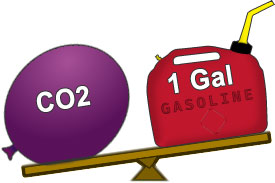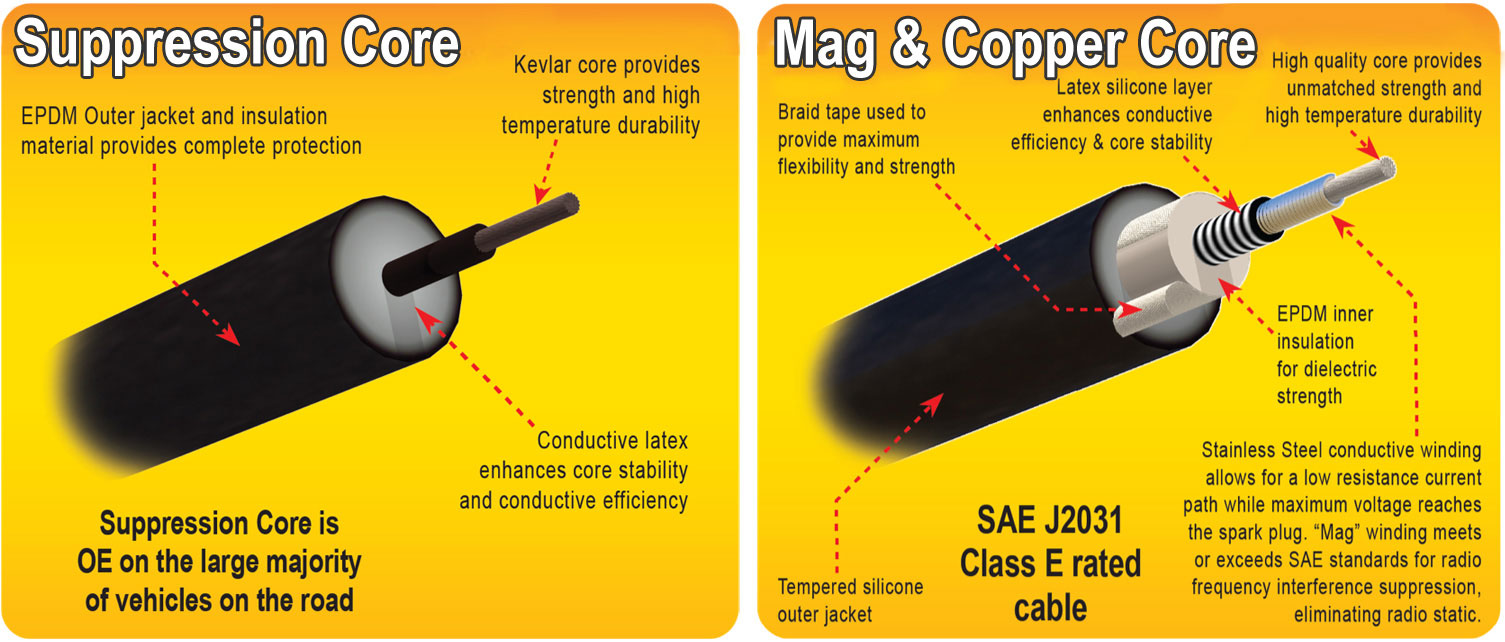|
Walker Products is offering RockAuto customers an exclusive 15% off instant rebate Walker Products ThunderCoreôPRO Spark Plug Wire sets are manufactured in their own ISO certified plant in the USA. Vehicle manufacturers design ignition systems in a particular way, so that all components work together to achieve optimum performance and fuel economy. This is why Walker Products' ThunderCoreôPRO Spark Plug Wire program breaks the trend of "one size fits all" wires. Their program includes Suppression, Mag & Copper core wires, each specifically engineered to match the vehicle and manufacturer requirements, for a 100% OE-style replacement every time. All wire sets are made with superior materials -- from the cable cores, to the high temperature resistant outer jacketing, to the terminal ends. Premium corrosion resistant snap lock terminals even click into place to ensure easy installation and removal. Find Walker Products Spark Plug Wires in the "Ignition" category of the RockAuto.com catalog. Watch for the |
|
RockAuto's Tom Taylor talks about Catalytic Converters and other emissions considerations before replacement. Watch MotorHead Garage on MotorTrend and Rev'n. | |

| |
 | |
 As a college student in the mid 1960s, I was pretty much always short of cash. I drove a 1959 Fiat 600 and could barely afford gas at 32 cents a gallon let alone a decent battery. I often struggled to get it started and often had to open the drivers door and push it, jump in and pop the clutch and hope it would start. The 600 in the name meant it had a 600cc engine, half the size of VW Beetle, so it was a very small car but still a chore to push start by yourself. So I was thrilled one morning to be able to convince some friends from the dorm into giving me a push. After at least four failed attempts they were getting a bit tired of the whole thing and ready to quit. That is when I looked at the ignition key and realized I had not turned on the ignition. I turned the key, stuck my head out the window and sheepishly shouted “Give it just one more try...I have a feeling it’s going to start this time." Sure enough the engine burst to life with that final push, and I was able to motor away with a big smile. It has been over 50 years since that day, but I have not fessed up to my old friends yet ... and may never. Unless they read this of course. Greg in Michigan Share Your Story |
|
 I sometimes wait too long to ask a question. It becomes awkward to admit I do not fully understand something that I have been nodding along to. The weight of carbon dioxide (CO2) is one of those things. For years, I have been reading and hearing about the massive weights of CO2 generated by all sorts of things. Human breathing alone creates about 1.7 gigatons (1 trillion kilograms or 2.2 trillion pounds) of CO2 annually (ref 1). Let us talk cars. Building a new car generates 6.2 tons (5.6 metric tons) of CO2. Building a new electric car releases 9.7 tons (8.8 metric tons) (ref 2). One factory can produce 600+ vehicles every work shift. Do new car factories have snowplows working to shove those thousands of tons of CO2 out of the way? Describing a gas such as CO2 in terms of its weight rather than its volume makes it harder to grasp why we are not wading through a thick layer of heavy carbon dioxide or attempting to push it around with snow plows. CO2, nitrogen, oxygen and the other gases that make up air all have weight but gases diffuse to fill available volume. They do not settle out in layers based on their weights (ref 3). The huge volume of the Earth's atmosphere gives gases plenty of room to spread out and move around as temperature and pressure changes. All those tons of CO2 spread out in the atmosphere until any cubic foot of air contains only about 0.0004 pounds (0.02 grams) of CO2 (ref 4), not enough weight for us to notice pushing through as we walk around. Burning a gallon (3.8L) of gasoline that weighs about 6 pounds (2.7 kg) creates about 19 pounds (8.9 kg) of CO2 (ref 5). How can burning a fuel make CO2 that weighs so much more than the fuel itself? Chemistry class was many decades ago for me, but I remember one of the laws said mass was neither created nor destroyed during a chemical reaction.  CO2 is one carbon atom bonded with two oxygen atoms. The new weight comes from the oxygen that is pulled out of the air to be part of the chemical reaction. The fuel provides the carbon atom and the surrounding air provides the two oxygen atoms. The weight of the oxygen atoms makes CO2 weigh about 3.7 times as much as a single carbon atom (ref 6). Gasoline is about 87% carbon (ref 7). That means the carbon atoms in a gallon of gasoline weigh about 5.2 pounds (87% of 6 pounds). Take the 5.2 pounds of carbon atoms in the gallon of gasoline and combine it with oxygen from the air and the resulting CO2 weighs about 19 pounds (5.2 pounds x 3.7 = 19 pounds). 19 pounds is the weight of a good sized dumbbell, but that 19 pounds of CO2 quickly spreads out into tens of thousands of cubic feet of air. There is never a 19 pound blob to bump our heads on. References: Tom Taylor, To read more of Tom's articles, click this link and choose from story titles on the Newsletter Archives page. |
|
 |
This is my 1968 Dodge W200 Crew Cab Power Wagon. Crew Cabs were pretty rare back then, and it turns heads every where I go with its patina that can not be faked. The original blue paint is Air Force blue from its first life in the military, and the red is from serving in the Arkansas Forestry Commission fire department. I eventually found it in Virginia and brought it home to New York about 10 years ago. I fixed it up using lots of parts from RockAuto like engine parts, rocker panels, clutch, brake system parts, u-joints and weatherstripping. Vince in New York |
Share Your Hard Work And Stories | |
|
Your Hard Work Your Most Infamous Auto Repair Blunder | |






